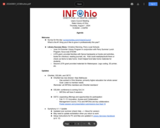
These are the meeting notes from the in-person Users Council meeting on August 1, 2024.
- Subject:
- 21st Century Skills
- Information, Media and Technological Literacy
- Material Type:
- Lecture Notes
- Date Added:
- 08/02/2024

These are the meeting notes from the in-person Users Council meeting on August 1, 2024.

These are the meeting notes from the virtual Users Council meeting on October 17, 2024.
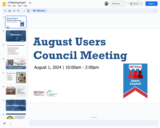
These slides are from the in-person INFOhio Users Council meeting on August 1, 2024.

District/Building INFOhio Coach, Karen Gedeon, from Cuyahoga Falls City Schools created these activities for middle school students to begin exploring ISearch.
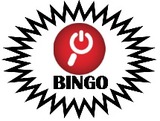
Revised with assistance from INFOhio Users Council members, ISearch BINGO can be broken into 3 separate activities which are listed below. Review the activities, and then download and print the documents you need.

INFOhio Users Council member and Ohio school librarian Amy Keister from Louisville City Schools created this activity perfect to get middle school students started in ISearch for exploration and research. Download and print to reproduce.

INFOhio Users Council members created this Jigsaw puzzle about Famous Ohioans. Students use ISearch to find the answers (and cite their sources) to the questions, then work together in groups to solve the Jigsaw Puzzle.

This infographic offers an overview of how confirmation bias and motivated reasoning impact our beliefs. It also outlines some key tips on how to best defend ourselves against cognitive biases.

A foundational guide to types of misinformation, "rumor cues" and more.

This infographic contains six tips to help students think clearly about news media bias, a nuanced and important topic.
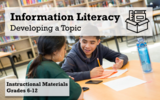
This content pack is intended to be a way for educators to discover new resources and lessons for teaching information literacy skills in grades 6-12. The instructional materials contained within this pack were selected to support students as they grow and develop the following skills. Develop a topic for research. Explain research goals. Formulate essential questions and questions to guide research. Reflect on prior knowledge.
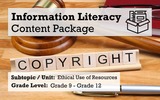
As high school students transition from consumers of information to creators of multimedia projects, understanding copyright, fair use, and citation issues is critical for educators and students. Students must be aware of the complexities of using online information, including text, images, audio, and video. Teachers require high-quality materials to support the teaching of information literacy, especially using resources ethically and responsibly. This content package is intended for educators to easily find lessons, eBooks, videos, articles, and other resources to support the teaching of using various content ethically and to help students understand their responsibility as creators to cite others' work.

This is a research article on the use of book trailers to promote reading in schools. The article discusses the benefits of book trailers, provides examples of effective book trailers, and offers tips for creating book trailers that engage readers.
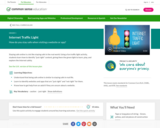
How do you stay safe when visiting a website or app? Staying safe online is a lot like staying safe in the real world. Using a fun traffic light activity, students learn how to identify "just right" content, giving them the green light to learn, play, and explore the internet safely. Approximately 35 mins.
LESSON OBJECTIVES: Understand that being safe online is similar to staying safe in real life. Learn to identify websites and apps that are "just right" and "not right" for them. Know how to get help from an adult if they are unsure about a website.
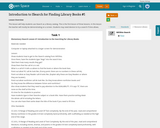
This lesson will help students use ISearch as a library catalog. This is the first lesson of three lessons. In this lesson the teacher will mostly be demonstrating on a screen. Students may need devices to try a search if time allows.
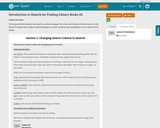
This lesson will help students use ISearch as a library catalog. This is the second lesson of three lessons. In this lesson the teacher will mostly be demonstrating on a screen. Students may need devices to try a search if time allows.
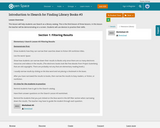
This lesson will help students use ISearch as a library catalog. This is the third lesson of three lessons. In this lesson the teacher will be demonstrating on a screen. Students will use devices to practice their skills.

Learning to categorize and sort objects and ideas is a key component to helping primary age students find and use materials in their library. When teaching students in grades 2-3 the Dewey Decimal System, consider this lesson which asks them to categorize recognizable objects into groups based on shared traits. Using concrete objects will help you bridge learning so that the more abstract concept of grouping books by similar topics is attainable for these learners. This lesson uses content from INFOhio's Educator Tools and ISearch.
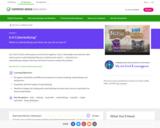
What is cyberbullying and what can you do to stop it? Let's face it: Some online spaces can be full of negative, rude, or downright mean behavior. But what counts as cyberbullying? Help your students learn what is -- and what isn't -- cyberbullying, and give them the tools they'll need to combat the problem. Approximately 45 mins.
LESSON OBJECTIVES: Recognize similarities and differences between in-person bullying, cyberbullying, and being mean. Empathize with the targets of cyberbullying. Identify strategies for dealing with cyberbullying and ways they can be an upstander for those being bullied.
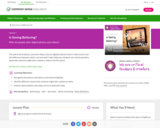
Why do people alter digital photos and videos? The web is full of photos, and even videos, that are digitally altered. And it's often hard to tell the difference between what's real and what's fake. Help your students ask critical questions about why someone might alter a photo or video in the first place. Approximately 45 mins.
LESSON OBJECTIVES: Recognize that photos and videos can be altered digitally. Identify different reasons why someone might alter a photo or video. Analyze altered photos and videos to try to determine why.